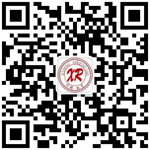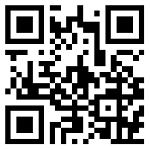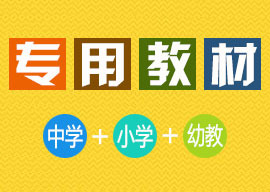提醒:点这里加小编微信(领取免费资料、获取最新资讯、解决考教师一切疑问!)
三、教学情境分析题32.【参考答案】
(1)语篇指的是实际使用的语言单位,是一次交际过程中的一系列连续的话段或句子所构成的语言整体。
根据韩礼德的观点,语篇是一个语义单位或意义潜势的现实化,任何一个口头或书面语言片段。不论其长短,只要能构成一个语义整体,即表达完整的意思,就可以称之为语篇。根据语篇的概念,该材料属于会话语篇。
(2)这份材料适合于口语教学。
理由:
①材料语言比较简单,没有生僻词汇,句式偏向口语化,适合用于口语练习;
②选材偏向生活化,有生活气息.适合平时与人交际使用,英语口语的最终目的就是让学生达到沟通交流,因此会话语篇可以提供这样一个交流的环境。
⑧材料以对话形式呈现有问有答,也有连读和吞音部分,对于语音语调的学习都是很好的内容。
(3)考虑要素:
①教学内容要素:教学内容是要完成的教学任务,是实现教学目标的主要载体。因此教师在选择材料时,将教科书作为主要依据,教材分析基本关注教学的重点、难点及考点方面。比较注重显性教材的运用而忽视隐性教材的挖掘和利用,较少关注与学习教材内容有密切关系的认知和心理因素。以及教材对学生能力的要求,而对教学的重点和难点也只是阐述其内容,没有做进一步的分析。在新课改背景下,教学内容分析既要求对显性教材的运用,也要求对隐性教材的挖掘和利用。
②教学对象要素:学生是分析教学任务必须要考虑的因素。分析学生是为了帮助学生解决学习中的困难,完成教学任务。教师应该做到以下两点:一是要了解教学活动开始前学生在认知、情感、态度等方面已经达到了什么样的水平,这一水平标志着学生已经能做什么,说什么,想明白了什么等等(即学生的学历和学情)。这是学生掌握新的学习任务的起点水平。二是要了解教授了教学材料后预期学生在认知、情感、态度等方面必须达到的状态。对这种状态的把握最终会转化为确定的教学任务与具体的学习目标。只有当教师的心中对教学前和教学后这两种状态的差距做到心中有数时,才能根据学生的实际情况,确定恰当的教学内容。
③教学目标要素:教学目标是教育者在教学过程中,希望受教育者达到的要求或产生的变化结果,也是教师完成教学任务的归宿。新课程标准从关注学生的学习出发,强调学生是学习的主体,教学目标是教学活动中师生共同追求的,而不是由教师所操纵的。因此,教学目标的主体显然应该是学生。教师在选择教学材料的同时也要以学生为出发点,思考需要完成怎样的教学目标或达到怎样的教学效果。
四、教学设计题
33.【参考设计】
Teaching Content: This lesson contains some new words, phrases, and sentence patterns ot going on vacation.
It will help students to express their past events.
Teaching Objectives ..
(1) Knowledge objective
Students could learn some new phrases and sentence patterns of vacation.
(2) Ability objective
Students could talk about their activities during vacation.
(3) Emotional objective
Students could enhance friendship during the class by talking about common interests.
Teaching Key Point:
New phrases and sentence patterns about vacation
Teaching Difficult Points:
How to get the students to talk about the topic actively.
Teaching Aids :
Multimedia, word cards, some related pictures
Teaching Procedures :
Step 1 Leading in and Warming up (5 minutes)
Greet with students and the teacher will share his / her own story about his / her vacation.
(Justifications: It can attract students' interests to learn this lesson.)
Step 2 Pre-reading (10 minutes)
The teacher will play a video of travelling during vacation. Students review some phrases about going on vacation. Teacher asks "What did you do on your vacation? " to enlighten students on talking about their experience.
(Justifications: Playing a video can lead in new class. The form of brainstorming is conducive to students'statements. It also paves the next step.)
Step 3 Phrases study (10 minutes)
Activity 1 : Make use of pictures on Page 1 to predict learning content and learn phrases"went to the beach""visited the museumsstayed at home", etc.
Activity 2: Students should do exercise in the textbook (la, lb).
Activity 3 : Students will do some added exercise of vocabulary by listening to the tape.
(Justifications: Students will understand the meanings of new vocabulary and pictures. Exercise from la helps students memorize new content. Listening exercise from lb will recall the key phases to students.)
Step 4 Practice (5 minutes)
Activity 1 : Students will look at pictures on Page 2 and answer two questions.
Activity 2: Students should complete listening exercise from 2a and 2b.
(Justifications: Pictures help students understand listening content better. Exercise from 2a and 2b helps students know what it talks about.)
Step 5 Pair work (10 minutes)
Three students will work in a group and play conversation practice by imitating Grace, Kevin and Julie according to materials of 2a and 2b.
(Justifications: This part helps students consolidate new words and sentence patterns and imitate pronunciation of listening material.)
Step 6 Summary and Homework (5 minutes)
Summary: Students will recall what they have learned today. The teacher can repeat them.
Homework: Students will prepare a speech on the topic "The most unforgettable thing during my vacation" after class and speak it out on the next class.
(Justification: They can help students to consolidate the knowledge what they have learned on the class.)
Blackboard Design :
New sentence patterns:
Where did Tina go on vacation?
She went to the mountains.
New phrases :
went to the beach
visited the museums
staved at home
提醒:点这里加小编微信(领取免费资料、获取最新资讯、解决考教师一切疑问!)









